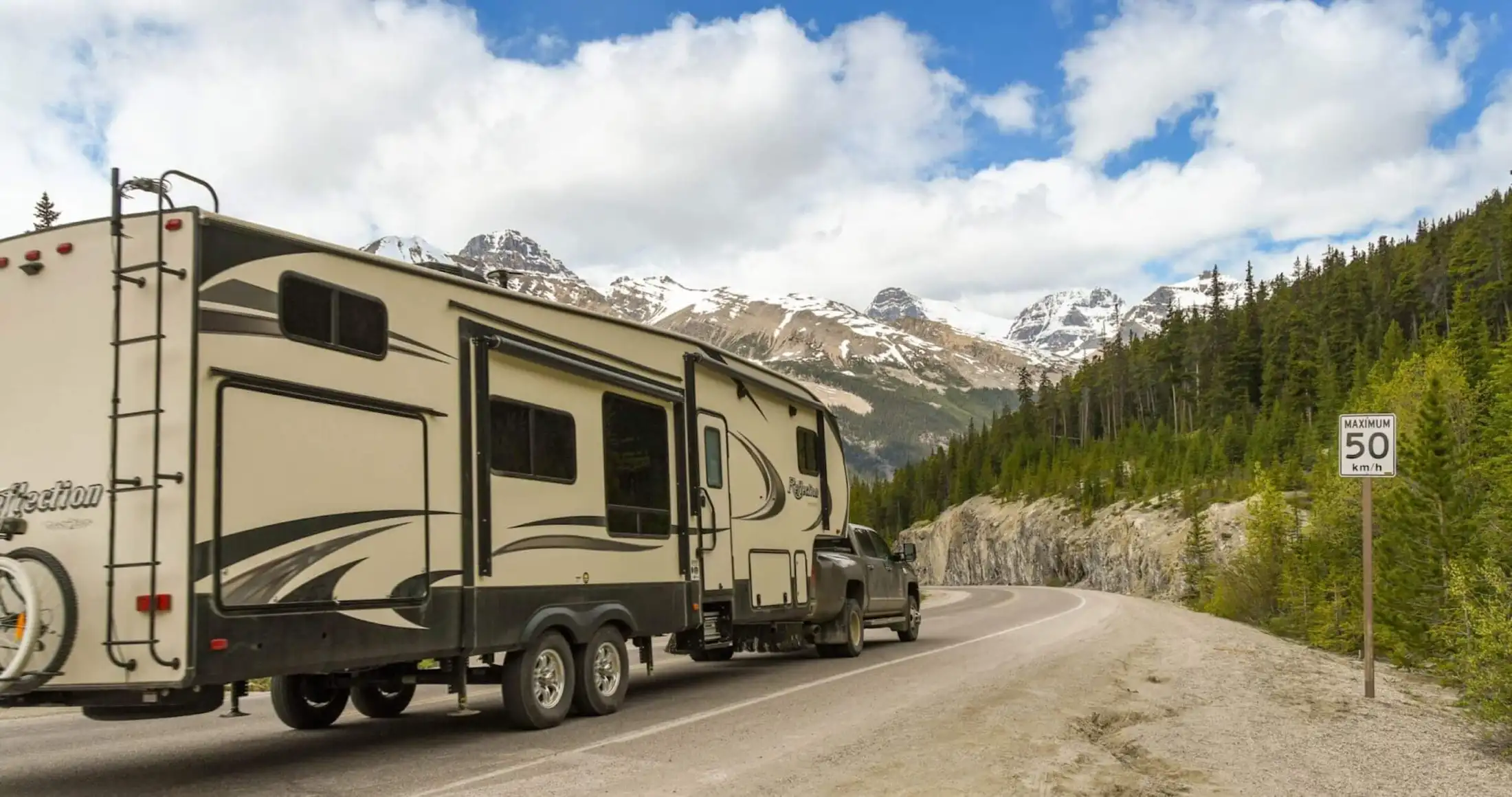Towing your RV can be a nervous experience at first especially if you’re not used to having towed anything before. The reality is it takes time to get comfortable towing your RV. The only way to increase that comfort is from time and practice. Here are several tips we’ve found to be very helpful along the way in hopes this helps shorten your learning and comfort curve.
- Buy your trailer before getting a tow vehicle
Selecting the right tow vehicle is the biggest factor in towing safety so choose your travel trailer first. That way, you’re far less likely to try towing with a vehicle that simply can’t handle it. - Get insurance before going anywhere
RV insurance is similar to that of a car. You can get liability, collision, and comprehensive coverage to protect you and your passengers in the event of an accident, injury, theft, or natural disaster. What kind and how much you need are mostly determined by the class of your RV. - Do your homework on the type of hitch you need
Whether you’re shopping for a truck or already have one, you’ll need to determine which type of hitch is needed to tow your RV. There are four main types.
Gooseneck: This attaches in the truck bed with universal or custom rails. It’s common on agriculture trailers and provides great stability and is suitable for heavier loads. The weight of the tongue rests directly on the truck bed over the rear axles.
Non Weight Distributing / Weight Carrying: This is mainly used for small and medium sized trailers. It should uniformly distribute your trailer tongue loads through the bumper and frame.
Weight Distributing: This works with a platform to distribute tongue load to all the trailer and tow vehicle wheels. Equalizing arms that connect to the trailer’s A-frame can be adjusted for towing performance. Spring bars bend up as chains are tightened, which lift weight from the rear wheels, and transfers it to the others on the vehicle and trailer.
Fifth Wheel: This is the most commonly used among RVs and mounts in the pickup bed to put more trailer weight directly over the towing vehicle. - Purchase extended side view mirrors
Standard mirrors aren’t going to cut it for RV towing because you won’t be able to see the entire rig behind you. Eliminate any potential blind spots by buying extended side view mirrors. You can get them permanently installed or go the clip on route so you can take on and off as desired. - Practice driving in an empty parking lot
A great way to ease your nerves is to drive your trailer away from other vehicles first. Find an empty parking lot where you can practice turns and backing up. Take it slow and be mindful that the longer your trailer is, the wider you’ll need to turn. - Research campgrounds in advance
Researching your campground before you leave home to ensure the campsite you select is long enough for both your tow vehicle and RV. The vast majority of reservation websites provide these details. Furthermore, never assume your campsite will be flat. When you get there, walk around and look for obstructions prior to parking. - Know your travel route
Determine exactly where you’re going before you leave home. Look up the best route to get to the campground. Keep in mind though that there’s more than just finding the faster way there. Now you need to look at where the bridges are and make sure you’re going to fit under them. Buy a navigation system with a trailer or RV setting to avoid course correcting in traffic. - Slow and steady
RVs are meant to go slower. You have extra weight behind you. That means it takes more time to accelerate, slow down, and stop. At all times while moving, keep four to six seconds between you and the vehicle in front of you. Also stay in the right late when you’re driving. You can keep an eye on what lane the commercial drivers are in and follow their example. - Test your brakes
Nearly all towable RVs feature electric brakes with a built in or add on controller that manages braking. Adjusting this controller is important. You want to set the controller so the trailer tugs on your tow vehicle without locking the brakes. Your tow vehicle should slow at the same time so it’s more like one large vehicle stopping instead of two. Test the intensity of your brakes by towing your trailer on a paved surface at approximately 25 miles per hour. Then fully apply your brakes using the manual activation lever on the brake control. If the wheels locked up, your setting is too aggressive. If you can’t feel the trailer, you need more braking power. You might need to readjust your settings depending on your trailer load. When you brake, your RV shouldn’t pull hard at the tow vehicle or rely too much on its brakes to stop. Adjust the brake control so your trailer responds well during both slower and faster stops.
